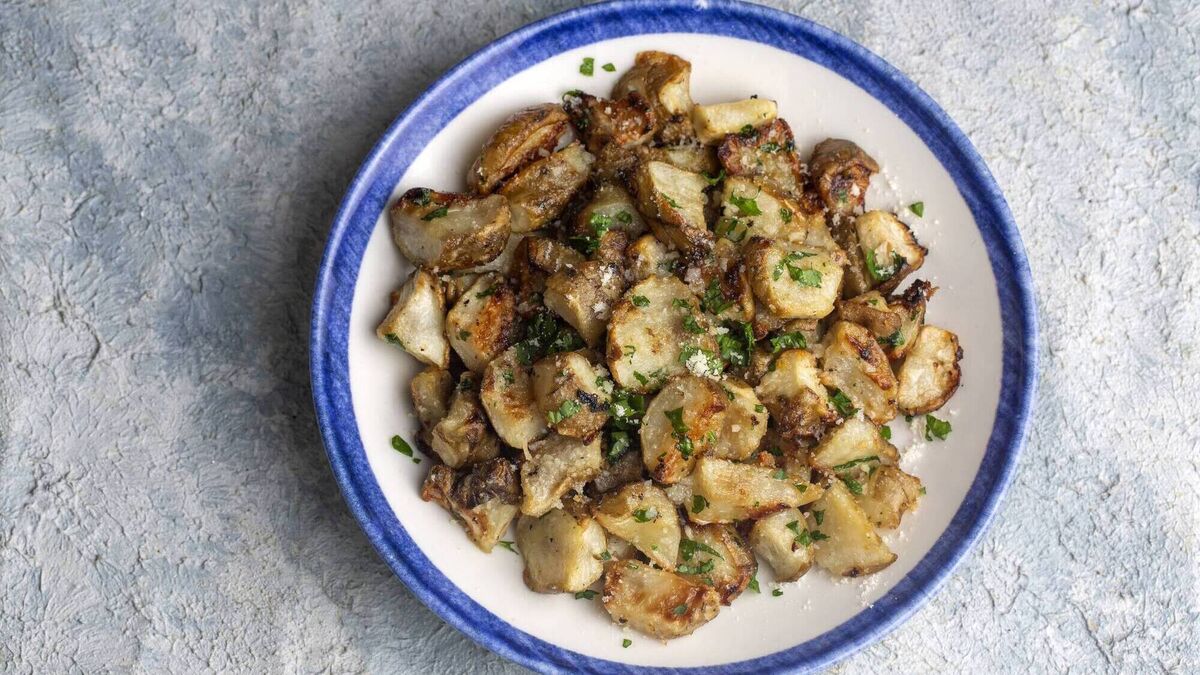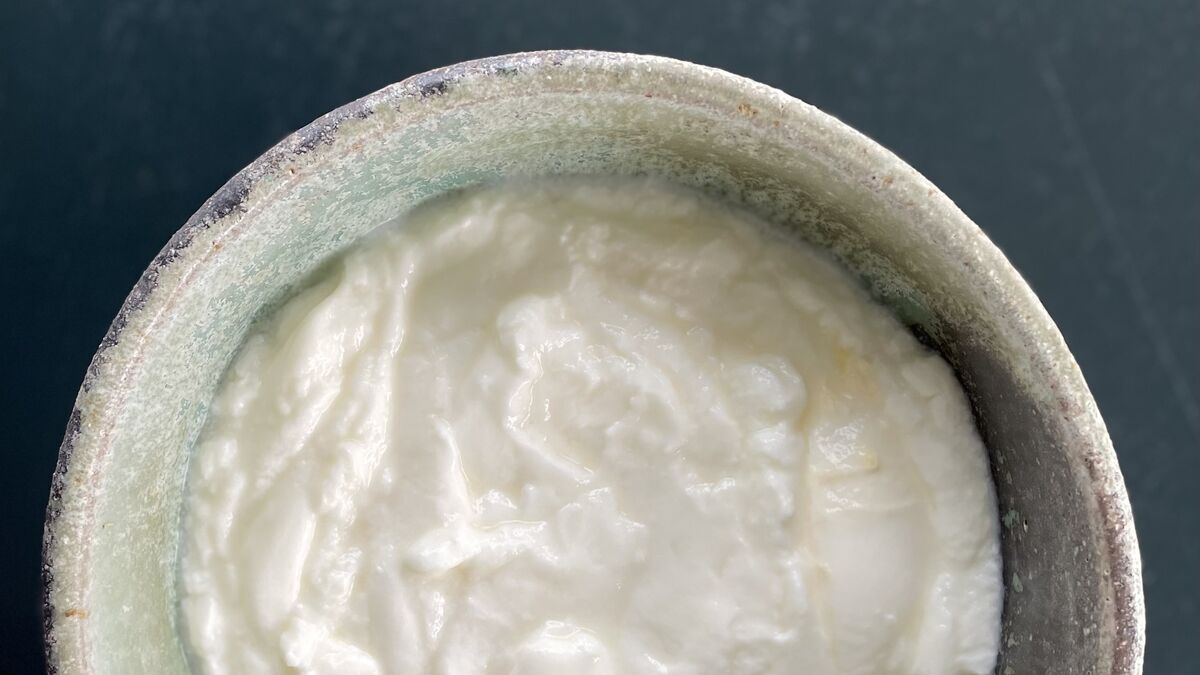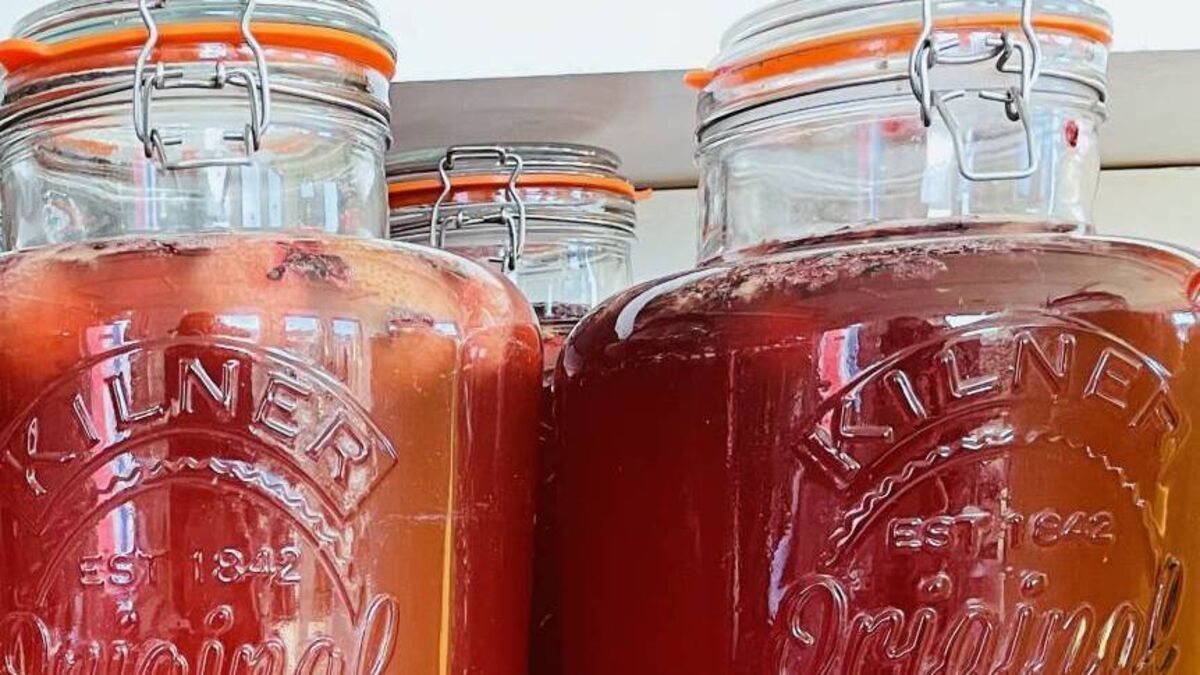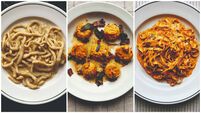Darina Allen: Three recipes to help replenish your gut biome after illness

Fermented foods are brilliant to restore a healthy gut biome
A recent encounter with antibiotics has set me thinking about the very best way to replenish my gut biome with oodles of good microbes after a course of essential antibiotics. In their quest to kill off all the pathogenic bacteria, many of the beneficial as well as the harmful microbes are extinguished, that’s just the way it is.
Roast Jerusalem Artichokes
Jerusalem artichokes are superstars for reintroducing beneficial bacteria into the gut.

Servings
4Preparation Time
10 minsCooking Time
20 minsTotal Time
30 minsCourse
MainIngredients
450g Jerusalem artichokes, well-scrubbed
2 tbsp extra virgin olive oil
salt and freshly ground pepper
a few rosemary or thyme
sprigs, optional
Method
Heat the oven to 220C/gas mark 7. Slice the well-scrubbed artichokes into 7mm rounds or lengthwise. Toss the Jerusalem artichokes with the extra virgin olive oil. Season well with salt and freshly ground black pepper.
Arrange in a single layer on silicone paper on a roasting tin. Roast for 10 minutes or until golden on one side then flip over and cook on the other side until nicely caramelised. Test with the tip of a knife. They should be tender.
One could sprinkle with a little thyme or rosemary, but they are perfectly delicious without any further embellishment. Season with freshly-ground pepper and serve.
Homemade Yoghurt
It is so simple to make your own yoghurt and the higher the quality the milk, the better the end result will be. We use organic Jersey milk and ingredients where possible.

Preparation Time
14 hours 0 minsCooking Time
5 minsTotal Time
14 hours 5 minsCourse
SideIngredients
600ml fresh milk
2-3 tsp live natural yoghurt
Method
Heat the milk to 90C in a heavy-bottomed saucepan. Allow to cool to 42C. Gently whisk in the yoghurt. Leave in the saucepan or pour into a deep terracotta bowl, cover and put into a warm draught-free place until set. This usually takes about 14 hours.
The cooler the temperature, the longer the yoghurt will take to set, but too high a temperature (over 50C) will kill the bacillus and the yogurt will not form, 43C to 44C is the ideal temperature.
Yoghurt can be set in a warm airing cupboard or boiler room, a vacuum flask with a wide neck or an insulated ice bucket
To keep the yoghurt warm, an earthenware pot with a lid, wrapped up in a warm blanket, put close to a radiator will also do the job. The simple aim is to provide steady even warmth to allow the bacillus to grow.
Remember to keep back 2 tablespoons of your bowl ofyoghurt as the starter of the next lot.
Penny’s Kombucha from the Ballymaloe Fermentation Shed
Kombucha is a fermented drink made from sweet tea. It is said to have many health benefits when consumed regularly. It is super easy to make, do not be intimidated by terms such as scoby.

Course
SideIngredients
750ml boiling water
2 tsp loose leaf tea or 2 tea bags
(green, white or black, organic is best)
150g organic caster sugar
1.25lt dechlorinated water
250ml Kombucha
1 Kombucha Scoby (symbiotic colony of bacteria and yeast)
Equipment:
3 litre Kilner jar or large Pyrex bowl or similar.
Measuring jug
Do not use a metal container when brewing kombucha
Method
Pour the cold water into the Kilner jar.
Make the tea with 750ml of boiling waterin a teapot or bowl. Let this sit for a few minutes to infuse. Add the caster sugar and stir to dissolve. Strain the sweet tea into the cold water in the jar.
The temperature of the sweetened tea should now be tepid and you should have just over 2lt of liquid.
Add 250ml of Kombucha and the Scoby.
Cover the jar or bowl with a clean cloth tied around with string or an elastic band. Do not be tempted to put a lid on it because the Kombucha Scoby needs air to thrive.
Put in a warmish place for 10 to 14 days. It should be out of direct sunlight and somewhere it will not have to be moved. Taste after 10 days and decide if it is to your liking. If not, leave a little longer.
The taste you are looking for is a pleasing balance between sweet and sour.
BottlingLift off the Scoby (which looks like a jelly) and put it in a bowl with 250ml of your just-brewed Kombucha and cover this with a plate or bowl while you bottle the rest.
Pour the brewed Kombucha into bottles through a funnel (makes 2 x 1 litre bottles), or into another large Kilner jar. You can then store this in the fridge and drink as it is, or you can do a second ferment to add flavour and extra nutritional benefits.
Second FermentationTo each bottle you can add a handful of any of the following: fresh or frozen (defrosted) raspberries, fresh or frozen (defrosted) strawberries and 1 tsp raw cacao, half an apple and a small beetroot chopped, 1 ripe peach sliced.
Let this sit for 24 to 48 hours at room temperature with a lid on. Then strain out the fruit (or vegetables) and bottle. Store in the fridge and drink. Delicious!
As part of the Common Knowledge Farming Pilot Project in Co Clare which is situated in The Burren and Cliffs of Moher Global Geopark. Zack Halliday is introducing more chickens to their land using a mobile chicken coop (aka chickshaw) and they want to share the process via their ‘DIY Chickshaw’ course.
Whether you have a modest backyard or sprawling farm, this course will equip you to welcome these feathered friends into your life.
You’ll learn how to build a mobile chicken coop capable of housing from 1-20 chickens.
Alongside the practical building skills involved in making a chickshaw, you will also learn all the essential knowledge about keeping your own chickens.
For more information, see www.ourcommonknowledge.org
Don’s miss Craicly Stories taking plate at Salterbridge House in Cappoquin on April 20 as part of the West Waterford Festival of Food celebrating local producers including Justin Green of Bertha’s Revenge Gin from Ballyvolane House in Castlelyons.
For more information, see www.craiclystories.com





